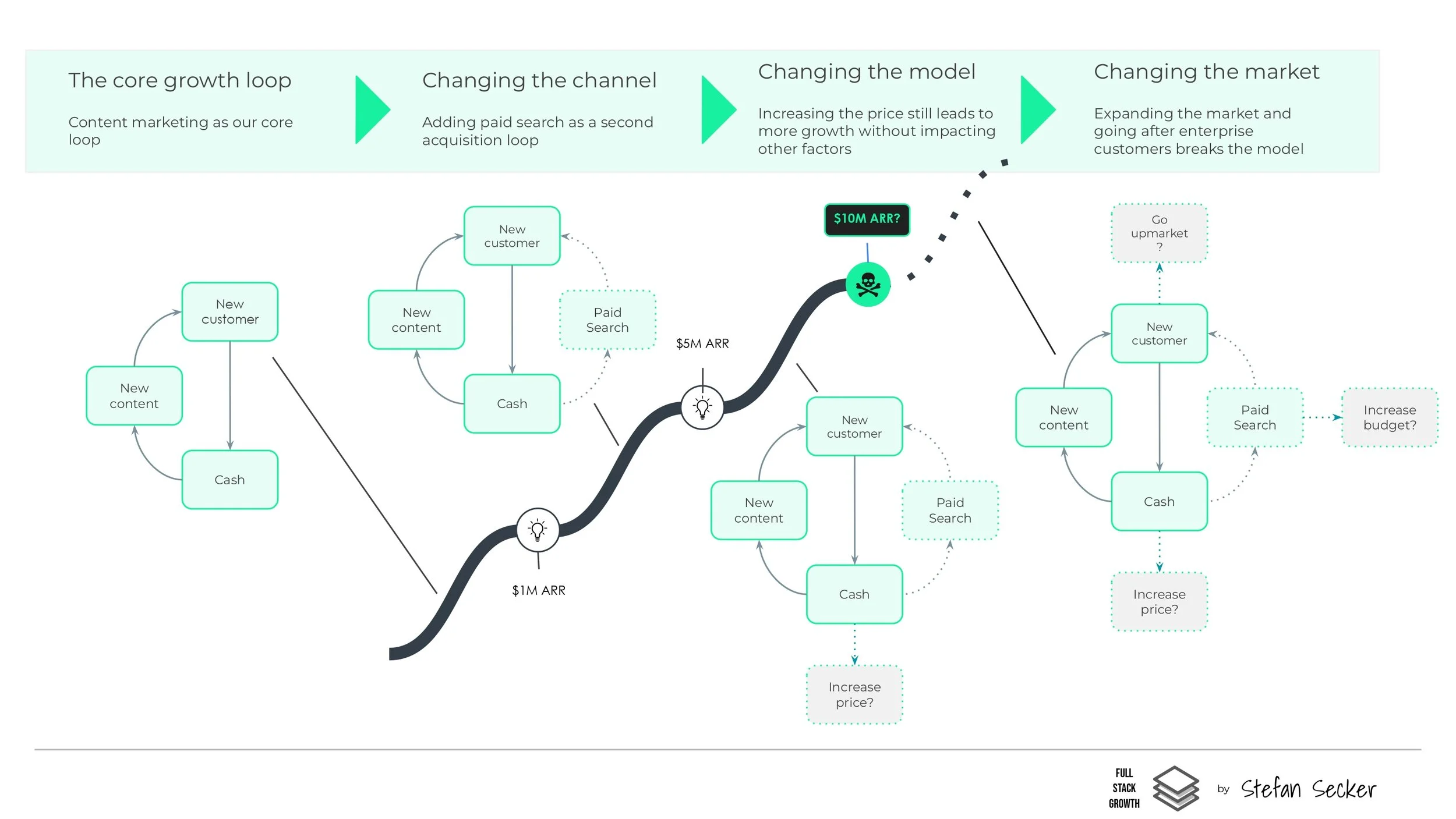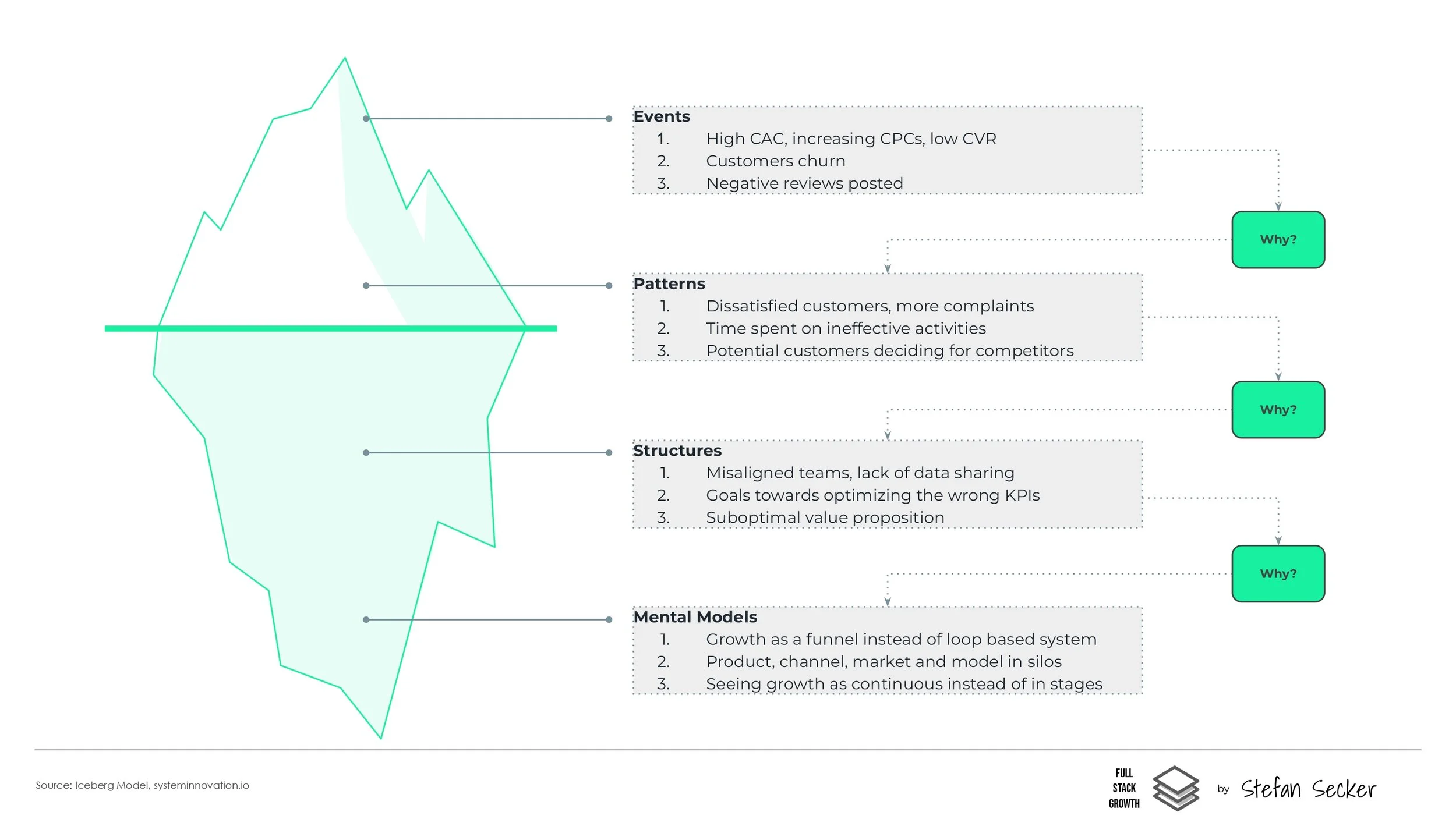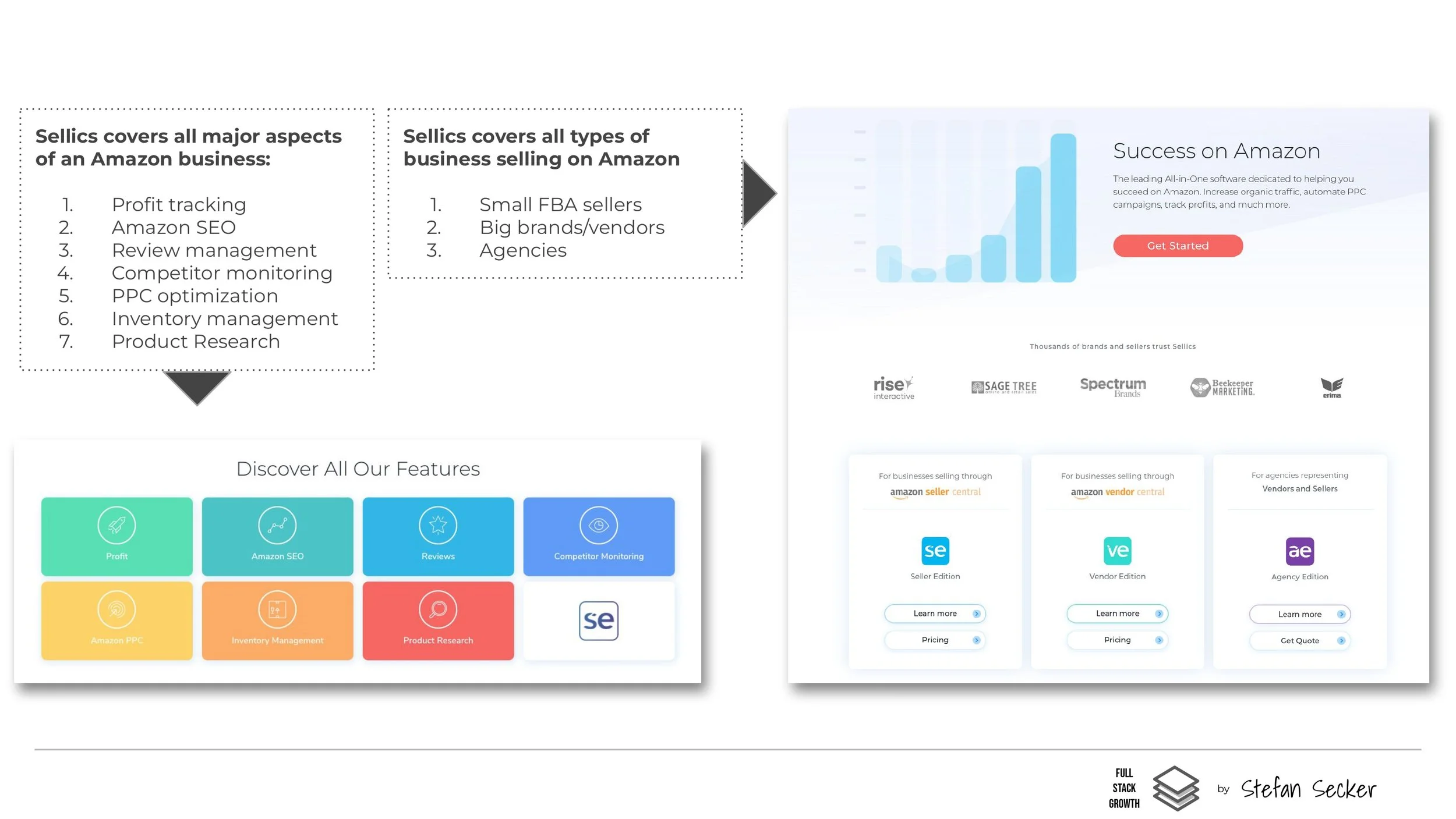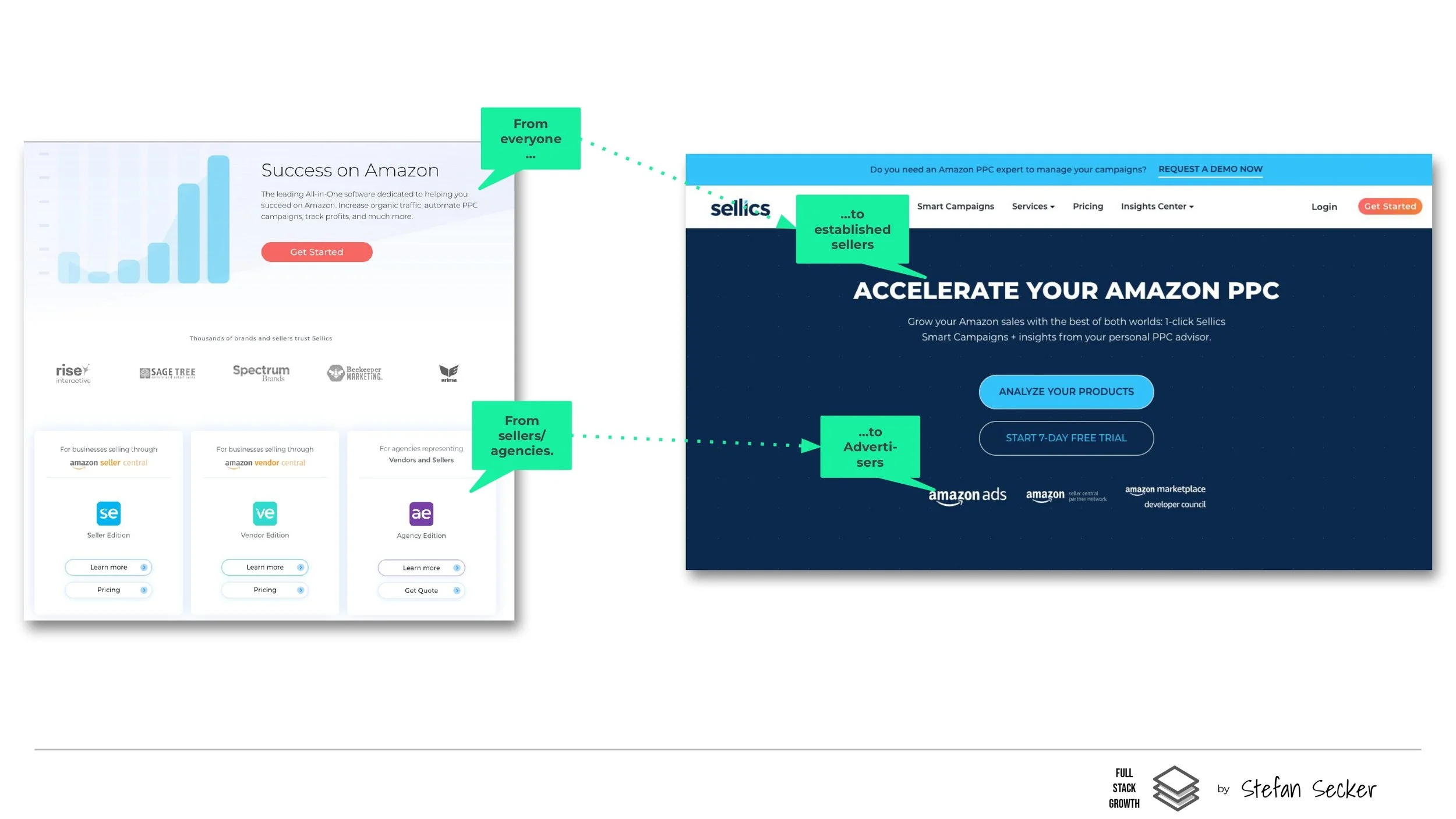Breaking through a plateau by redesigning the growth model (and adding a freemium layer)
Summary
This case study outlines a strategic overhaul of the growth model at Sellics, a SaaS platform for Amazon sellers, using a framework known as the Four Fits (by Brian Balfour): Market-Product, Market-Model, Product-Channel, and Model-Channel.
Originally a successful all-in-one Amazon optimization tool, Sellics reached $7M ARR but hit a plateau and even declined, due to misalignment across these fits, siloed thinking, and flawed assumptions about growth continuity.
The analysis identifies how Sellics' initial success was driven by strong content marketing and paid search loops. However, attempts to scale by adding new channels, expanding the market, and increasing budget quickly led to diminishing returns. To break through this plateau, the team restructured each of the four fits:
Market: Narrowed from "all Amazon sellers" to a clear focus on established advertisers.
Product: Shifted from broad feature coverage to a deep, targeted PPC optimization suite.
Model: Combined the 14-day trial with a freemium model and moved from revenue-based to budget-based pricing, increasing LTV.
Channel: Introduced new acquisition loops via freemium-based affiliate and content partnerships, enabling a more scalable, defensible model.
This redesigned model created compounding effects through better data loops, increased word-of-mouth, and stronger brand equity. The result was a more efficient and resilient growth engine. The case highlights the importance of diagnosing strategic inflection points early and realigning core growth levers systematically.
The evolution of the Sellics Growth model went through several major stages
Initially, growth was driven mainly through content marketing.
To accelerate growth, we added a paid ads ads loop (mostly paid search, but other product-specific channels such as Amazon Seller Central Ads, played a major role as well.
The plateau between $5M and $10M ARR could not be cracked by simply expanding channels, or adding new ones. Since we had also exhausted the option of a pricing increase, we needed to redesign the entire growth model.
Understanding the root causes of the plateau, helped us rebuild the model from the ground up
To understand the root causes of the growth plateau, we applied the Systems Thinking Iceberg Model. Instead of just reacting to surface-level symptoms like rising CAC or customer churn, we used it to dig deeper and uncover the underlying issues driving these outcomes.
At the top of the iceberg are the visible symptoms: high acquisition costs, low conversion rates, and negative customer feedback. But when we asked “Why?”, we uncovered recurring patterns beneath the surface—growing customer dissatisfaction, wasted time on low-impact activities, and a steady increase in lost deals to competitors.
Going another layer down revealed the structural causes behind these patterns: misaligned teams, poor data sharing, goals tied to the wrong KPIs, and a value proposition that didn’t clearly resonate with the right audience.
At the foundation of it all were the mental models—the invisible assumptions shaping how we approached growth. We were thinking in funnels instead of loops, treating product, model, and channel as separate rather than interconnected, and expecting steady, linear growth instead of recognizing the need for reinvention at key inflection points.
This shift in perspective was crucial. By challenging and reshaping these mental models, we laid the groundwork to redesign our growth strategy from the bottom up—focusing on a clearer target market, going deeper into the PPC use case, introducing a freemium model, and opening up new acquisition channels that better fit the new direction.
Too Many Features, Too Many Targets, lack of focus
We started with a broad approach: our product had many features, and our growth strategy was to keep adding more in order to cover a larger portion of the Amazon seller workflow and value chain.
At the same time, we tried to move upmarket by targeting large brands, small one-person businesses, and mid-sized retailers all at once. So while it appeared that we were narrowly focused—serving only Amazon sellers—in reality, our strategy was quite scattered.
Rebuilding the model: One change enables the next
Instead of targeting all Amazon sellers with a broad, all-in-one tool, we narrowed our focus to advertisers aiming to grow through PPC.
This allowed the team to simplify the product around PPC optimization, replace the 14-day free trial with a freemium model, and introduce mid-tier pricing.
These changes, in turn, opened up new acquisition channels like affiliates and YouTube. Each adjustment supported the next, aligning the market, product, model, and channel into a more focused and scalable growth engine.
Changing the Market: narrowing down our target segment
Changing the product and positioning: From all-inone to PPC optimization
Changing the product to enable freemium: Creating a tool to provide free PPC account performance benchmarks and insights
Changing the model and pricing: Freemium layer and increased pricing tier
Changing the channel: Freemium unlocks new acquisition channel - Youtube Influencers
Result: The new growth model is more efficient and defensible
Old loop:
New customers acquired to SEO/SEM
Cash reinvested to create more content and buy more traffic
New loop:
Having a free PPC analysis, allows for freemium acquisition model
Re-engaging with updated reports gives more chances to convert
Freemium model enables affiliates as a new channel
Returning users have more opportunities to share
Macro loop: Data NFX/Brand
More Benchmarker users share access to their advertising data
More data enables more accurate insights and analysis
Increased product value leads to more WOM and better brand perception
Stronger brand and product is more defensible and improves all acquisition KPIs










